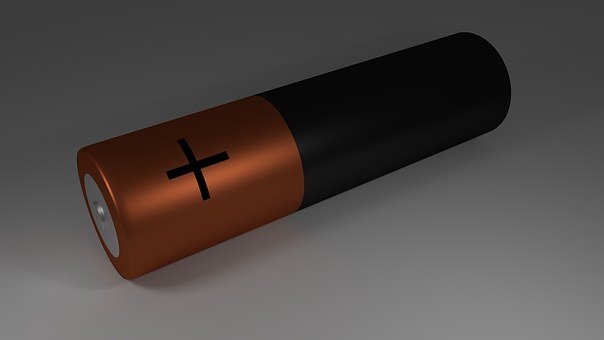AA battery’s “self-recharging” characteristics are most obvious. You may sometimes push the engine until the battery appears to be completely dead, then return an hour later and crank it again. So, the question is can AA batteries recharge themselves?
The answer is no. Cells have no other way to charge themselves because they don’t make energy. Simply said, no automotive battery can charge itself, whether it is healthy or not. To be charged, it must constantly be connected to a power source.
Let’s know more about the AA batteries and their charging systems.
How Do Rechargeable Batteries Work?
Electrons move from an anode to a cathode until the anode runs out of electrons, which is how all batteries function.
As a result, the battery is termed ‘dead’ or empty.
That’s all there is to main batteries. A charger may reverse the electron flow in secondary or rechargeable batteries, restoring the initial excess of electrons in the anode and resulting in a charged battery.
The chemicals employed in the battery determine whether or not this process may be reversed.
For example, alkaline batteries aren’t designed to allow for reverse flow. It’s possible that doing so will put you in danger.
A NiMH battery allows for hundreds, if not thousands, of forced reverse flows. The procedure, on the other hand, causes the compounds to deteriorate over time.
As a result, batteries can’t be recharged and depleted indefinitely: at some time, the chemicals will have decayed too much to retain a charge.
What Are AA Batteries?
AA batteries are one of the most widely used forms of interchangeable power cells today.
They’re what most of us imagine when we think of a basic replaceable battery’s ‘classic’ size and form.
AA batteries are very adaptable and easily accessible practically everywhere in the globe. They are frequently used in single-cell devices or paired into pairs (or bigger multiples) for powering larger but still reasonably portable consumer gadgets.
We’ll go over several AA battery kinds, material variations, and performance recommendations in this article.
We’ll also look at some common AA battery usage scenarios and commonly asked questions to assist you to understand how to get the most out of your cell-powered gadgets while staying safe.
Rechargeable AA Batteries:
Rechargeable AA batteries are widely available these days, and you can get them in virtually as many locations as non-rechargeable versions.
While there are different chemical types, NiMH is probably definitely the most popular rechargeable AA battery you’ll come across today. The once widespread NiCd types are now increasingly viewed as somewhat obsolete, thanks to being both fairly low capacity and toxic.
In many everyday applications, rechargeable AA batteries are hard to surpass for convenience and long-term cost-effectiveness.
They’re frequently supplied in multiples of two or four cells, along with a charger, though any number of the batteries themselves – or even the necessary chargers – may be purchased individually.
The advantage of rechargeable AA battery packs is that they can be swapped in and out much like a single cell.
This is considerably more convenient than having to remove each cell one by one when you need to charge or replace them for gadgets that require many batteries to power on.
All of the individual AA cells in a good rechargeable battery pack are functionally equivalent, adequately balanced, and can be charged and discharged at equal rates across their active lives.
This is better for the batteries themselves as well as the long-term health of the gadgets they’re powering.
Lithium AA Batteries:
When it comes to AA lithium batteries, it’s critical to understand the difference between lithium and lithium-ion cells.
The latter, abbreviated as ‘Li-ion,’ is the widely rechargeable variants that are often found in mobile phones, computers, drones, vaping devices, and a wide range of other high-drain consumer electronics items.
These Li-ion batteries are made up of lithium and other chemicals, and they virtually always have a different shape and size (typically huge, flat, and rectangular) than button-top AA batteries.
Li-ion batteries run at far greater voltages than conventional AA batteries, hence they should never be charged with a charger designed for AA-type NiMH or alkaline batteries.
Many battery types can ultimately leak or explode if placed in the improper charger, but Li-ion cells can burn with frightening fury if mismanaged poorly enough.
Alkaline AA batteries:
AA alkaline batteries are the ‘standard’ variety, available in a wide range of stores and suitable for use in practically any low-powered consumer electronics item.
Wall clocks, non-mains accent lighting, cordless phones, smaller flashlights, TV remotes, games and toys, handheld culinary or grooming devices, and a variety of portable audiovisual technologies all use alkaline AA batteries to provide cost-effective mid-tier cell power.
Alkaline chemistry will get the job done inexpensively and effectively for the great majority of these items.
A regular, non-rechargeable AA alkaline battery has the benefit of being readily accessible, cost-effective in the short term, and suited for such a wide range of low-drain devices that it is practically the default option for many people.
If you think about it, you probably have a few extra alkaline AA batteries at home right now.
However, if you haven’t used them in a while, it’s worth double-checking their condition.
Why Rechargeable Batteries Are Good?
Rechargeable batteries save money and are better for the environment.
If saving money is your major motivation for switching, don’t rush out and replace all of your AA, AAA, C, and D batteries with rechargeable equivalents.
This is why.
Many low-current-draw gadgets, such as wall clocks, smoke alarms, radios, thermostats, emergency flashlights, and even your often used wireless keyboard and mouse, are powered by batteries.
If you utilized rechargeable batteries, it would take years to reach the payback period for these gadgets because they consume so little power.
Final Words
So, there’s no magic of charging batteries all on their own. It’s the science. But Scientists are trying to invent batteries that can be charged by sunlight.
Related Posts:


